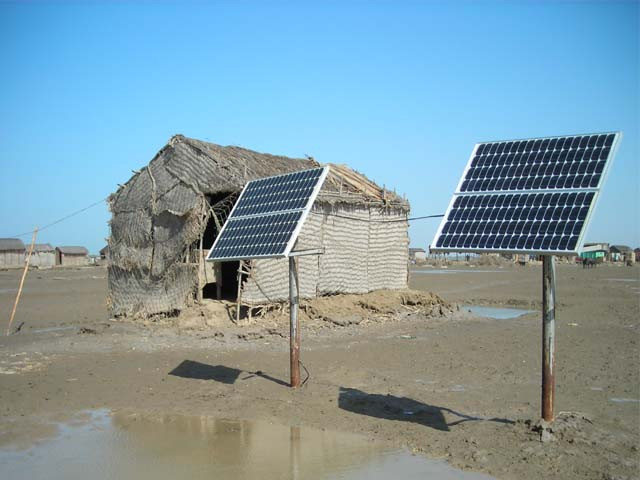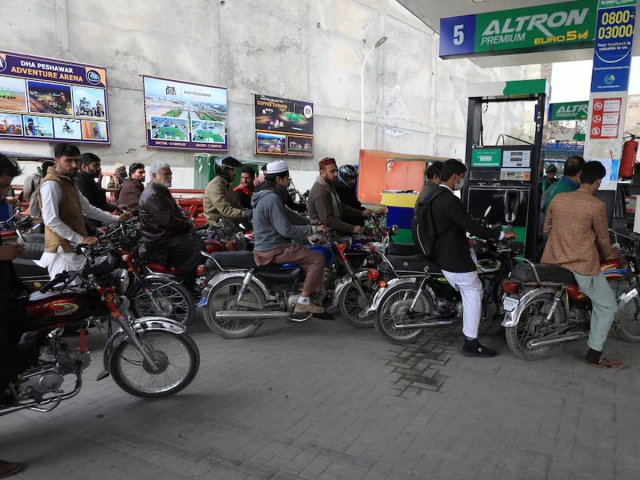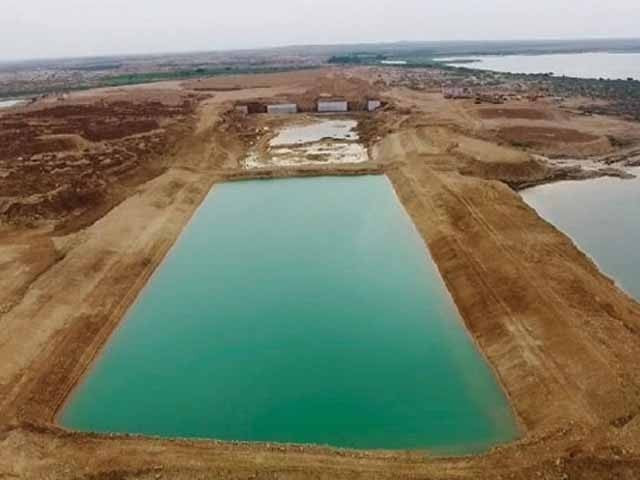Business
PSX breaks 150k barrier, hits another record | The Express Tribune

KARACHI:
The Pakistan Stock Exchange (PSX) soared past another record on Tuesday, breaking the 150,000 mark for the first time ever during intra-day trading.
Analysts remarked that bullish momentum from previous sessions continued, driven by strong institutional inflows, particularly in banking and cement sectors. Additionally, investor sentiment was bolstered by a positive economic outlook from both Fitch and Moody’s and the government’s attempts to settle the circular debt.
The sustained momentum propelled the KSE-100 index to the intra-day high of 150,323, before it closed at 149,770.75, an increase of 1,574.32 points, or 1.06%.
According to Ahsan Mehanti of Arif Habib Corp, stocks closed at an all-time high as investors weighed Fitch and Moody’s robust economic outlook, with Fitch projecting growth of 3.5% for FY27. Additionally, the government’s plans to cut Rs2.6 trillion worth of circular debt alongside upbeat data of exports, cement dispatches and rupee stability drove the PSX to the record close, he noted.
At the end of trading, the benchmark KSE-100 index recorded an increase of 1,574.32 points, or 1.06%, and settled at 149,770.75.
In its market review, Topline Securities remarked that the bullish momentum from previous sessions continued, driven by strong institutional inflows, particularly in banking and cement sectors. According to a Topline analyst, cement sales are gaining momentum in August and earnings could exceed expectations.
The sustained optimism propelled the benchmark KSE-100 index to intra-day high of 150,323, up 2,127 points, before it closed at an all-time high of 149,771, marking a net gain of 1,574 points, it said.
The rally was largely fuelled by index heavyweights including Bank AL Habib, UBL, Lucky Cement, Meezan Bank and Engro Corporation, which contributed 1,306 points to the index’s upward trajectory.
In its commentary, Arif Habib Limited (AHL) stated that the KSE-100 witnessed another strong session, with the index unlocking 150,000 points intra-day. Some 60 shares rose while 40 fell, with Bank AL Habib (+10%), Lucky Cement (+4.13%) and Meezan Bank (+3.63%) contributing the most to index gains.
On the flip side, Fauji Fertiliser Company (-0.75%), Oil and Gas Development Company (-1.58%) and Hub Power (-1.38%) were the biggest drags, it said.
Systems Limited (-1.51%) announced its 1HCY25 earnings per share (EPS) of Rs3.52, an increase of 59%, which was in line with expectations. The increase was primarily driven by higher technology services’ exports and improved gross margins, AHL noted.
Additionally, Pakistan State Oil (PSO) reported FY25 EPS of Rs45.11, an increase of 33% year-on-year, and dividend per share of Rs10, which was also in line with expectations.
Kot Addu Power Co and Fauji Foundation jointly submitted an offer to Pharaon Investment to buy its 84.06% stake in Attock Cement (-1.48%). Moreover, Oil and Gas Development Company (-1.58%) and Pakistan Petroleum (-1.57%), in separate meetings, approved an increase in pro rata funding commitment, including the project cost to $715 million.
“Near term support rises to 147,500-148,300 points, against which immediate gains are anticipated to continue,” AHL concluded.
AHL Deputy Head of Trading Ali Najib remarked that the KSE-100 index sustained its bullish streak, briefly unlocking the 150k milestone intra-day before closing the session higher, reflecting renewed investor optimism. Macro developments also lent support as Fitch’s improved outlook on Pakistan’s banking sector boosted sentiment, citing stronger capital buffers, improving credit growth potential and a healthier macro backdrop, he stated.
Overall trading volumes increased to 809.1 million shares compared with Monday’s tally of 610.3 million. Traded value stood at Rs48.4 billion. Shares of 483 companies were traded. Of these, 265 stocks closed higher, 194 dropped and 24 remained unchanged.
WorldCall Telecom was the volume leader with trading in 52.3 million shares, gaining Rs0.05 to close at Rs1.45. It was followed by The Bank of Punjab with 46.1 million shares, gaining Rs0.33 to close at Rs14.76 and Fauji Cement with 43.7 million shares, gaining Rs2.98 to close at Rs53.48. Foreign investors sold shares worth Rs488 million, the National Clearing Company reported.
Business
Key Financial Deadlines That Have Been Extended For December 2025; Know The Last Date

New Delhi: Several crucial deadlines have been extended in December 2025, including ITR for tax audit cases, ITR filing and PAN and Aadhaar linking. These deadlines will be crucial in ensuring that your financial affairs operate smoothly in the months ahead.
Here is a quick rundown of the important deadlines for December to help you stay compliant and avoid last-minute hassles.
ITR deadline for tax audit cases
The Central Board of Direct Taxes has extended the due date of furnishing of return of income under sub-Section (1) of Section 139 of the Act for the Assessment Year 2025-26 which is October 31, 2025 in the case of assessees referred in clause (a) of Explanation 2 to sub-Section (1) of Section 139 of the Act, to December 10, 2025.
Belated ITR filing deadline
A belated ITR filing happens when an ITR is submitted after the original due date which is permitted by Section 139(4) of the Income Tax Act. Filing a belated return helps you meet your tax obligations, but it involves penalties. You can only file a belated return for FY 2024–25 until December 31, 2025. However, there will be a late fee and interest charged.
PAN and Aadhaar linking deadline
The Income Tax Department has extended the deadline to link their PAN with Aadhaar card to December 31, 2025 for anyone who acquired their PAN using an Aadhaar enrolment ID before October 1, 2024. If you miss this deadline your PAN will become inoperative which will have an impact on your banking transactions, income tax return filing and other financial investments.
Business
Stock Market Live Updates: Sensex, Nifty Hit Record Highs; Bank Nifty Climbs 60,000 For The First Time

Stock Market News Live Updates: Indian equity benchmarks opened with a strong gap-up on Monday, December 1, touching fresh record highs, buoyed by a sharp acceleration in Q2FY26 GDP growth to a six-quarter peak of 8.2%. Positive cues from Asian markets further lifted investor sentiment.
The BSE Sensex was trading at 85,994, up 288 points or 0.34%, after touching an all-time high of 86,159 in early deals. The Nifty 50 stood at 26,290, higher by 87 points or 0.33%, after scaling a record intraday high of 26,325.8.
Broader markets also saw gains, with the Midcap index rising 0.27% and the Smallcap index advancing 0.52%.
On the sectoral front, the Nifty Bank hit a historic milestone by crossing the 60,000 mark for the first time, gaining 0.4% to touch a fresh peak of 60,114.05.
Meanwhile, the Metal and PSU Bank indices climbed 0.8% each in early trade.
Global cues
Asia-Pacific markets were mostly lower on Monday as traders assessed fresh Chinese manufacturing data and increasingly priced in the likelihood of a US Federal Reserve rate cut later this month.
According to the CME FedWatch Tool, markets are now assigning an 87.4 per cent probability to a rate cut at the Fed’s December 10 meeting.
China’s factory activity unexpectedly slipped back into contraction in November, with the RatingDog China General Manufacturing PMI by S&P Global easing to 49.9, below expectations of 50.5, as weak domestic demand persisted.
Japan’s Nikkei 225 slipped 1.6 per cent, while the broader Topix declined 0.86 per cent. In South Korea, the Kospi dropped 0.30 per cent and Australia’s S&P/ASX 200 was down 0.31 per cent.
US stock futures were steady in early Asian trade after a positive week on Wall Street. On Friday, in a shortened post-Thanksgiving session, the Nasdaq Composite climbed 0.65 per cent to 23,365.69, its fifth consecutive day of gains.
The S&P 500 rose 0.54 per cent to 6,849.09, while the Dow Jones Industrial Average added 289.30 points, or 0.61 per cent, to close at 47,716.42.
Business
Global Conflicts Drive Arms Industry to $679 Billion Record Revenues – SUCH TV

Sales by the world’s top 100 arms makers reached a record $679 billion last year, as conflicts in Ukraine and Gaza fueled demand, according to researchers. Production challenges, however, continued to hamper timely deliveries.
The figure represents a 5.9 percent increase from the previous year, and over the 2015–2024 period, revenues for the top 100 arms makers have grown by 26 percent, according to a report by the Stockholm International Peace Research Institute (SIPRI).
“Last year, global arms revenues reached the highest level ever recorded by SIPRI, as producers capitalized on strong demand,” said Lorenzo Scarazzato, a researcher with the SIPRI Military Expenditure and Arms Production Programme.
Regional Trends
According to SIPRI researcher Jade Guiberteau Ricard, the growth is mostly driven by Europe, though all regions saw increases except Asia and Oceania.
The surge in Europe is linked to the war in Ukraine and heightened security concerns regarding Russia.
Countries supporting Ukraine and replenishing their stockpiles have also contributed to rising demand.
Ricard added that many European nations are now seeking to modernize and expand their militaries, creating a new source of demand.
US and European Arms Makers
The United States hosts 39 of the world’s top 100 arms makers, including the top three: Lockheed Martin, RTX (formerly Raytheon Technologies), and Northrop Grumman. US companies saw combined revenues rise 3.8 percent to $334 billion, nearly half of the global total.
European arms makers (26 companies in the top 100) recorded aggregate revenues of $151 billion, a 13 percent increase.
The Czech company Czechoslovak Group recorded the sharpest rise, with revenues jumping 193 percent to $3.6 billion, benefiting from the Czech Ammunition Initiative, which supplies artillery shells to Ukraine.
However, European producers face challenges in meeting increased demand, as sourcing raw materials has become more difficult.
Companies like Airbus and France’s Safran previously sourced half of their titanium from Russia before 2022 and have had to identify new suppliers.
Additionally, Chinese export restrictions on critical minerals have forced firms such as France’s Thales and Germany’s Rheinmetall to restructure supply chains, raising costs.
Russian Arms Industry
Two Russian arms makers, Rostec and United Shipbuilding Corporation, are among the top 100, with combined revenues rising 23 percent to $31.2 billion, despite component shortages caused by international sanctions.
Domestic demand largely offset the decline in exports. However, Russia’s arms industry faces a shortage of skilled labor, limiting its ability to sustain production rates necessary for ongoing military operations.
Israeli weapons still popular
The Asia and Oceania region was the only region to see the overall revenues of the 23 companies based there go down — their combined revenues dropped 1.2 percent to $130 billion.
But the authors stressed that the picture across Asia was varied and the overall drop was the result of by a larger drop among Chinese arms makers.
“A host of corruption allegations in Chinese arms procurement led to major arms contracts being postponed or cancelled in 2024,” Nan Tian, Director of SIPRI’s Military Expenditure and Arms Production Programme, said in a statement.
Tian added that the drop deepened “uncertainty” around China’s efforts to modernise its military.
In contrast, Japanese and South Korean weapons makers saw their revenues increase, also driven by European demand.
Meanwhile, nine of the top 100 arms companies were based in the Middle East, with combined revenues of $31 billion.
The three Israeli arms companies in the ranking accounted for more than half of that, as their combined revenues grew by 16 percent to $16.2 billion.
SIPRI researcher Zubaida Karim noted in a statement that “the growing backlash over Israel’s actions in Gaza seems to have had little impact on interest in Israeli weapons”.
-

 Sports1 week ago
Sports1 week agoWATCH: Ronaldo scores spectacular bicycle kick
-

 Entertainment1 week ago
Entertainment1 week agoWelcome to Derry’ episode 5 delivers shocking twist
-

 Politics1 week ago
Politics1 week agoWashington and Kyiv Stress Any Peace Deal Must Fully Respect Ukraine’s Sovereignty
-

 Business1 week ago
Business1 week agoKey economic data and trends that will shape Rachel Reeves’ Budget
-

 Tech6 days ago
Tech6 days agoWake Up—the Best Black Friday Mattress Sales Are Here
-

 Politics1 week ago
Politics1 week ago53,000 Sikhs vote in Ottawa Khalistan Referendum amid Carney-Modi trade talks scrutiny
-

 Fashion1 week ago
Fashion1 week agoCanada’s Lululemon unveils team Canada kit for Milano Cortina 2026
-

 Tech6 days ago
Tech6 days agoThe Alienware Aurora Gaming Desktop Punches Above Its Weight


1729471601-0/image-(8)1729471601-0-640x480.webp)









